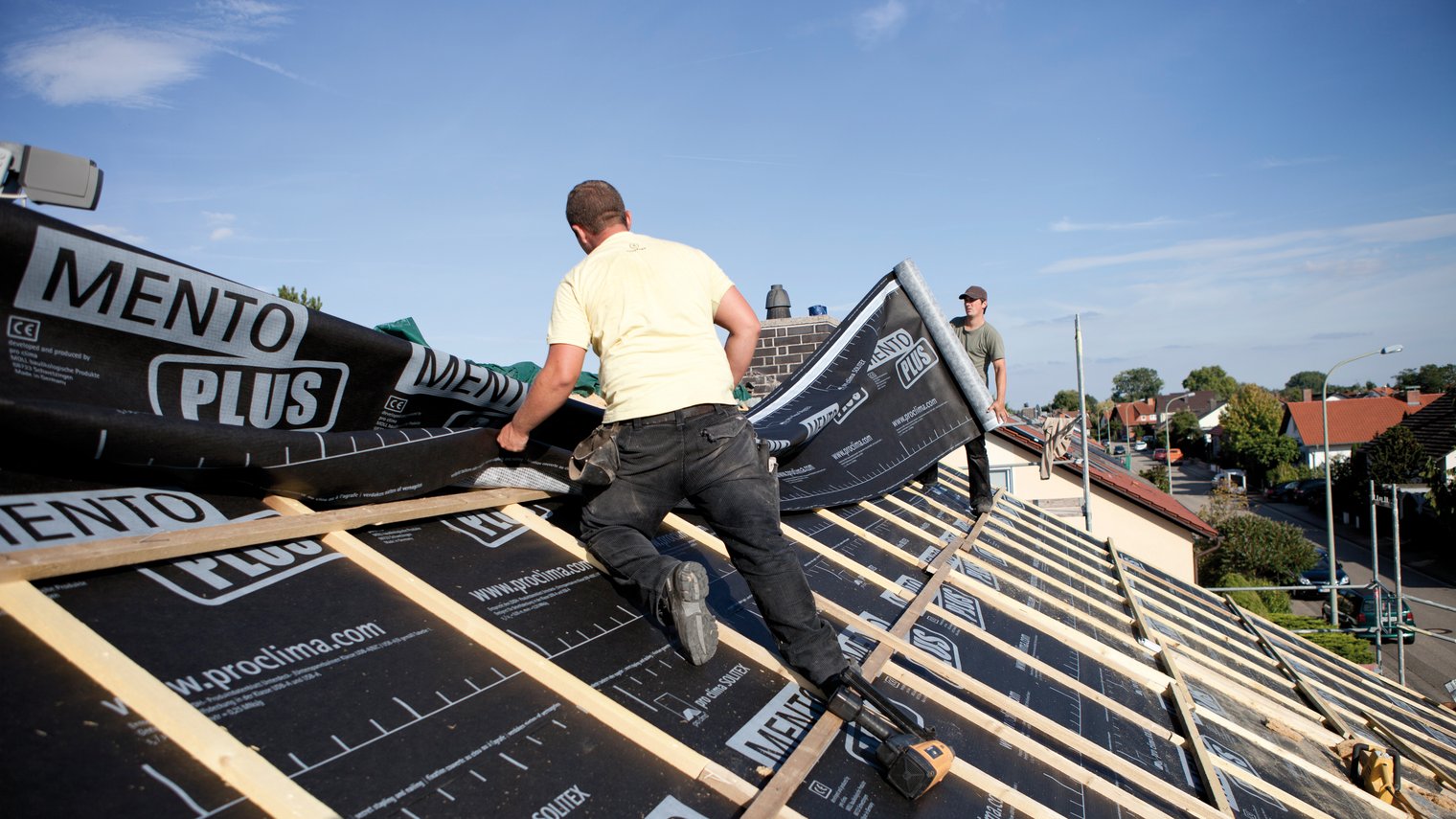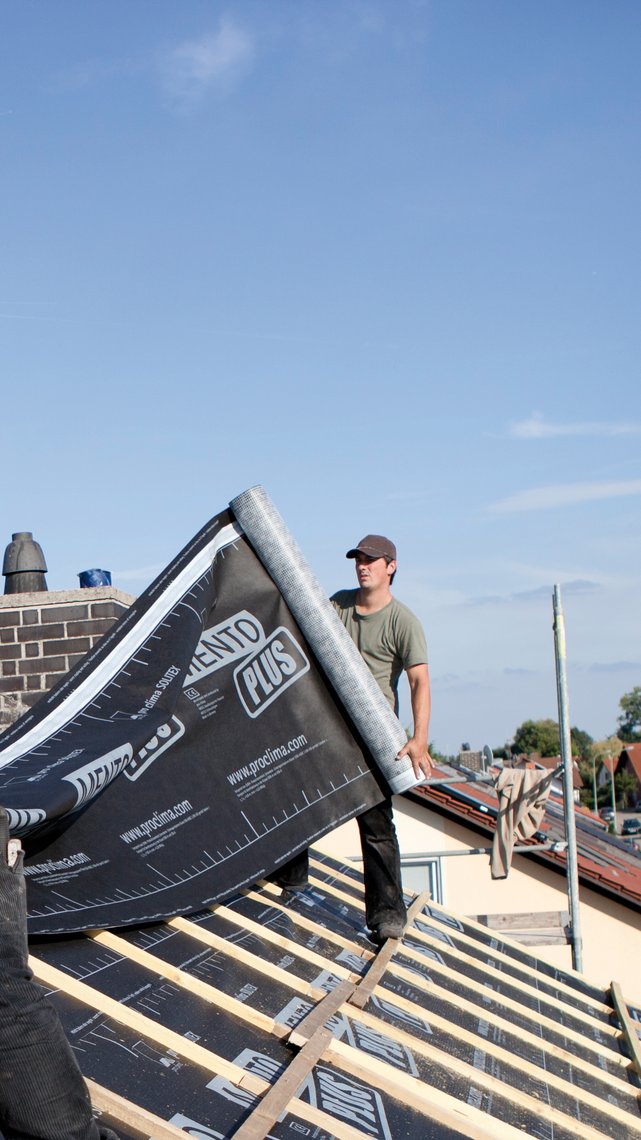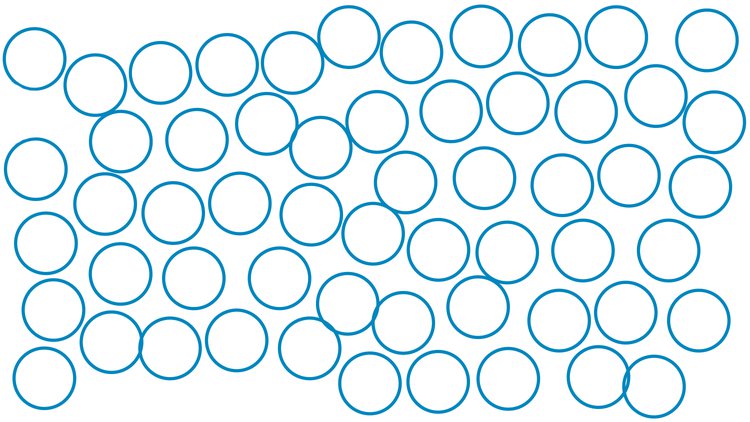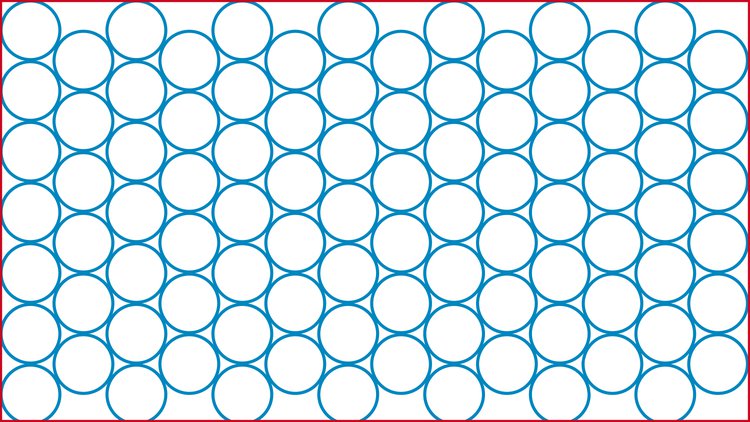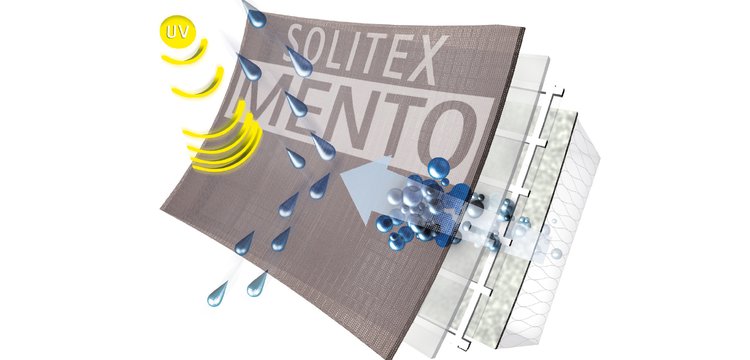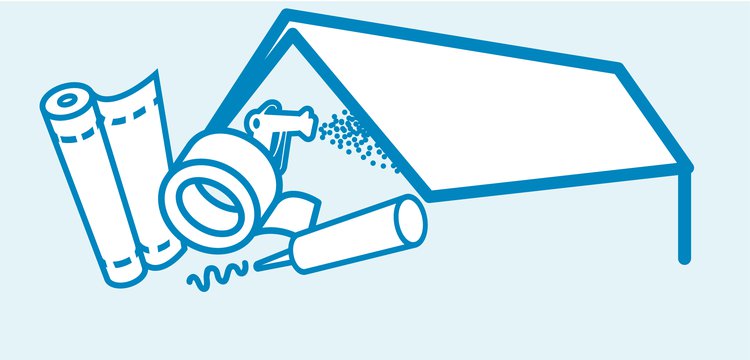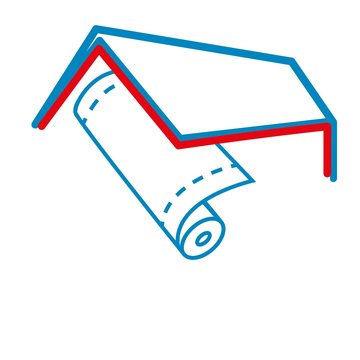Why is windtight construction important?
Protection against wind and weather
The windtightness layer protects the insulation material on the outside against rain, snow and wind. It also stops cold outside air flowing through the thermal insulation, which would reduce the performance of the insulation.
Key component
Windtightness plays an important role in optimising the performance of thermal insulation. The windtightness layer is installed on the exterior of the insulation material and stops air from flowing through the outer insulation layers and also prevents back ventilation of the insulation layer by cold outdoor air. Stationary air inclusions inside the material structure are essential for the insulating effectiveness of cellulose, wood fibre, hemp, wool, mineral fibres etc. As a result, windtightness ensures that insulation will work properly and prevents localised cooling of interior surfaces.
In the case of ventilated structures with a roof sealing that is ventilated from below, the windtightness layer provides additional protection against drops of secondary condensation water, rain or snow drift. A carefully installed windtightness layer also improves the prevention of convection flows.
Insulation effect of stationary air
Unprotected insulation material: Air movements in the porous structure make the insulation less effective.
Protected thermal insulation
Protected insulation material: No air movements are possible in the porous structure, full insulation effect.
An example: The thermal insulation effect of a woollen jumper is based on the stationary air inclusions in the fibres: as soon as a cold wind starts to blow, the insulation becomes less effective. However, the insulation effect is restored if you wear a thin wind-breaker, which itself has no significant heating function, over the jumper.
Airtight on the inside, windtight on the outside
It can be seen that the insulation material should be sealed on all sides in the ideal insulation structure: on the outside by the windtightness layer, e.g. an underlay or facade membrane that is open to diffusion, and on the inside with an airtightness and vapour check layer. The windtightness stops cold outside air flowing through the insulation. The airtightness provides protection against the entry of humid indoor air and thus against condensation and mould.
Note: Faultless installation work is important when installing air sealing, as leaks in surfaces and at joints will have direct consequences.

